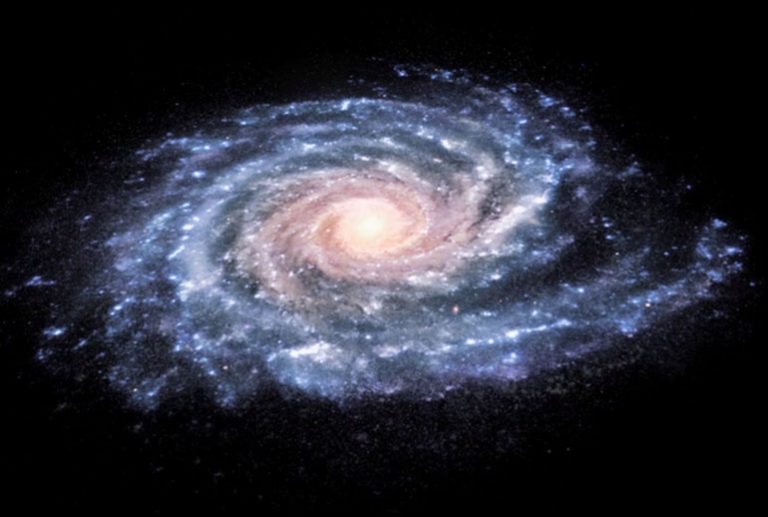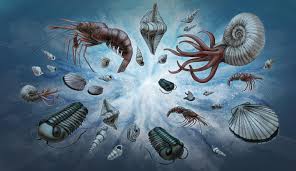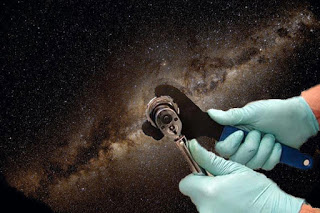It is a common theme in science fiction for extraterrestrial beings to visit Earth—often with hostile intent, seeking to destroy us for no clear reason, driven by desperation to acquire a vital natural resource that is scarce on their home planet but plentiful here. Some stories portray these visitors as highly evolved intelligence, observing us as scientists study lab mice, hoping to better understand what they themselves were like in a distant evolutionary past. Others, however, imagine aliens arriving simply to befriend us—integrating into human society, forming relationships, even marrying Earthlings, and establishing a foothold for their kind on our planet.
With the rise of such narratives, the idea that life might be as widespread as the stars and planets themselves began to take hold in the public imagination. Mars became one of the earliest subjects of speculation. People envisioned it as home to beings far more advanced than us—creatures capable of building spacecraft that could traverse millions of kilometers to reach Earth. The term “Martians” was coined to describe these imagined inhabitants.
English author H.G. Wells popularized this idea in his groundbreaking 1898 novel The War of the Worlds, in which he depicted a failed Martian invasion of Earth. The Martians, despite their technological superiority, succumbed to Earth’s microscopic organisms, having no immune defenses against our common bacteria. The success of Wells’s work sparked a cultural fascination with extraterrestrial life that persists to this day, continually invigorated by new discoveries in astrophysics and space exploration.
Voyager 1, a spacecraft launched from Cape Canaveral, Florida, on September 5, 1977, was originally designed for a mission lasting about twenty years. Yet, defying expectations, it continues its voyage to this day, now drifting through the vastness of interstellar space on a path toward the center of our galaxy.
Among the many remarkable transmissions from Voyager 1, perhaps none is more profound than the iconic “Pale Blue Dot”[1] photograph. This image—an unassuming yet deeply evocative portrait of our planet—stands as one of the most important visuals ever captured by humanity. However, it is not the kind of picture we associate with views from the Moon or the International Space Station, where Earth appears as a vibrant sphere with discernible continents, swirling clouds, and vast blue oceans.
Instead, this photograph reveals Earth as nothing more than a tiny speck—barely distinguishable, comparable in size to the tip of a pin—suspended in a ray of scattered sunlight. Taken from a staggering distance of six billion kilometers away (for comparison, the average distance between Earth and the Sun is 150 million kilometers), the image was captured on February 14, 1990. It serves as a humbling reminder of our planet’s fragility and insignificance against the vast backdrop of the cosmos. In response to this photograph, astronomer Carl Sagan[2] published A Pale Blue Dot: A Vision of the Human Future in Space, four years later. One of the book’s chapters states:
Look again at that dot. That’s here. That’s home. That’s us. On it everyone you love, everyone you know, everyone you ever heard of, every human being whoever was, lived out their lives. The aggregate of our joy and suffering, thousands of confident religions, ideologies, and economic doctrines, every hunter and forager, every hero and coward, every creator and destroyer of civilization, every king and peasant, every young couple in love, every mother and father, hopeful child, inventor and explorer, every teacher of morals, every corrupt politician, every “superstar,” every “supreme leader,” every saint and sinner in the history of our species lived there-on a mote of dust suspended in a sunbeam.
The Earth is a very small stage in a vast cosmic arena. Think of the endless cruelties visited by the inhabitants of one corner of this pixel on the scarcely distinguishable inhabitants of some other corner, how frequent their misunderstandings, how eager they are to kill one another, how fervent their hatreds. Think of the rivers of blood spilled by all those generals and emperors so that, in glory and triumph, they could become the momentary masters of a fraction of a dot.
Our posturing, our imagined self-importance, the delusion that we have some privileged position in the Universe, are challenged by this point of pale light. Our planet is a lonely speck in the great enveloping cosmic dark. In our obscurity, in all this vastness, there is no hint that help will come from elsewhere to save us from ourselves.
The Earth is the only world known so far to harbor life. There is nowhere else, at least in the near future, to which our species could migrate. Visit, yes. Settle, not yet. Like it or not, for the moment the Earth is where we make our stand.
It has been said that astronomy is a humbling and character-building experience. There is perhaps no better demonstration of the folly of human conceits than this distant image of our tiny world. To me, it underscores our responsibility to deal kindlier with one another, and to preserve and cherish the pale blue dot, the only home we’ve ever known.
The seti (Search for Extraterrestrial Intelligence) project is dedicated to the quest for intelligent life beyond Earth. It does so by analyzing electromagnetic signals—such as radio waves, television broadcasts, mobile phone transmissions, and even light emitted by streetlamps—captured by various radio telescopes. In addition to passively listening, seti also engages in active efforts by sending different kinds of messages into space, hoping that one day, one might receive a response.
If intelligent beings exist elsewhere in our galaxy and are conducting a search like ours, they will need to be located within approximately one hundred light-years of Earth to detect any of our earliest signals. This is the estimated distance that some of the first terrestrial broadcasts, like those from the bbc in London beginning in 1922, have traveled. While 100 light-years—equivalent to about 9.4 × 10¹⁴ kilometers—is an immense distance by human standards (see Appendix B), it is relatively small when compared to the vast span of our Milky Way galaxy, which measures roughly 100,000 light-years across (or 9.4 × 10¹⁷ kilometers). In galactic terms, any civilization capable of hearing our signals would have to be in our cosmic neighborhood—like living on the same city block.
seti is not the only initiative of its kind. Numerous other projects, both in the United States and across Europe, are engaged in the search for extraterrestrial intelligence. To date, however, no definitive signals of intelligent origin have been detected. Still, as the saying goes, “absence of evidence is not evidence of absence.” We cannot yet conclude that intelligent life beyond Earth does not exist—and perhaps we never truly will be able to.
In 1950, Italian physicist Enrico Fermi—Nobel laureate and widely recognized as the “father of the nuclear reactor”—formulated what is now known as the Fermi Paradox. This paradox highlights the apparent contradiction between the high probability of intelligent life existing elsewhere in the universe and the complete absence of any concrete evidence confirming its existence.
Over the past seventy years, our understanding of the cosmos has expanded dramatically. Much of this progress is due to technological advancements that have allowed us to overcome the visual limitations imposed by Earth’s atmosphere, which acts like a hazy, semi-transparent veil that distorts our view of the universe. The deployment of space-based observatories—most notably the Hubble Space Telescope[3], launched on April 24, 1990—has enabled us to peer deep into space with unprecedented clarity, free from atmospheric interference.
Given how little was known in 1950, it is not surprising that scientists of the time speculated that numerous planets like Earth might exist—worlds capable of supporting complex life.
To estimate the likelihood of life existing elsewhere in the universe—even if it is not intelligent—we must first identify the minimum requirements a planet must meet to support life. Once these essential conditions are defined, we can then assess the probability of such planets existing elsewhere in space.
For centuries, humanity held a geocentric view of the cosmos, believing that Earth was the center of the universe and that the Sun, planets, and all celestial bodies revolved around it. This worldview was profoundly challenged by Nicolaus Copernicus[4], who spent 25 years developing his seminal work De Revolutionibus Orbium Coelestium (On the Revolutions of the Celestial Spheres), completed in 1532. In it, Copernicus demonstrated that the Sun, not Earth, lies at the center of our solar system, and that Earth, along with the other planets, revolves around it. This heliocentric model marked a turning point in scientific thought and forever altered our understanding of our place in the cosmos.
With this revolutionary insight, Earth lost its perceived central and privileged position. Instead of being the focal point of the universe, our planet was reclassified as just one among many orbiting a common star. Over time, this perspective gave rise to what became known as the Copernican Principle—the idea that Earth and its circumstances are not unique or special. If life arose here, under certain conditions, it stands to reason that similar conditions could exist—and similar life could arise—elsewhere.
Further expansion of our cosmic understanding came in 1921, when astronomer Edwin Hubble[5] discovered that many of the bright spots in the night sky previously thought to be stars were in fact entire galaxies, each composed of billions of stars, planets, and other celestial bodies. Until then, it was widely believed that the Milky Way encompassed the entire universe. Hubble’s revelation shattered that notion, expanding the known universe by unimaginable scales—trillions upon trillions of times larger than once believed.
With this newfound perspective, the idea that planets like Earth might be common gained scientific credibility. If galaxies are filled with billions of stars, and many of those stars host planets, then the potential for Earth-like worlds—capable of harboring life—could be vast. Under the Copernican Principle, life is not a cosmic miracle confined to a single world, but rather a phenomenon that might be woven throughout the fabric of the universe.
I imagine that the number of inhabited planets in our galaxy is of the order of thousands or hundreds of thousands. And why do I think there is life on other planets? Because the universe is extremely large, there are billions and billions of stars. So, unless our Earth has something very special, very special, miraculous if you will, what has happened here on Earth must have happened many times on other planets. (Seth Shostak, Senior Seti Astronomer)
The hypothesis that life may exist beyond Earth gave rise to the scientific field of astrobiology—a discipline devoted to understanding the origins, evolution, distribution, and potential future of life in the universe. One of its primary missions is to determine whether habitable planets are rare exceptions or common occurrences in the cosmos.
A leading contributor to this field is Guillermo González[6], an astrobiologist and astrophysicist at Iowa State University, who works closely with nasa’s astrobiology programs. The overarching goal of such research is to identify the key conditions necessary for life and to determine whether these conditions exist elsewhere in the universe.
Astrobiology rests on two foundational assumptions. First, there are millions upon millions of stars in the universe, many of which are accompanied by planetary systems. Second, that the emergence and persistence of complex life requires an intricate chain of events and extremely precise environmental conditions. Among the most critical of these is the presence of liquid water, which is essential for all known forms of life.
For liquid water to exist, a planet must orbit its star at just the right distance—not too close and not too far. If it is too close, water would evaporate due to extreme heat; too far, and water would freeze solidly. This narrow orbital range is referred to as the “Goldilocks zone[7]“—a region within each solar system where conditions are just right for liquid water to exist on a planet’s surface.
In our own solar system, Earth occupies this precise zone. Scientists estimate that if Earth were just 5% closer to the Sun, it would experience a runaway greenhouse effect like that of Venus, with surface temperatures soaring to around 900°f, rendering the planet uninhabitable and devoid of liquid water. Conversely, if Earth were 20% farther away, it would resemble Mars—a cold desert world where carbon dioxide clouds dominate the atmosphere and water would freeze, making life as we know it impossible.
Because the laws of physics and chemistry are universal, scientists base their search for habitable exoplanets on these same principles. Accordingly, efforts to identify alien worlds capable of supporting life focus primarily on finding planets situated within their star’s Goldilocks zone—places where liquid water, and potentially life, might thrive.
While the presence of liquid water is essential for life, it is far from the only requirement. The recipe for a life-supporting planet is profoundly complex, involving a delicate interplay of astrophysical, geological, and atmospheric conditions. For a planet to harbor life—particularly complex life—it must meet a broad range of finely tuned criteria, including but not limited to the following:
- Just as solar systems have a “Goldilocks zone,” galaxies have habitable zones as well. The core of a galaxy is typically a chaotic and dangerous region, marked by high stellar density, frequent supernovae, and intense radiation. Building a habitable planet there would be like constructing a home in a minefield surrounded by erupting volcanoes, within a tornado corridor, and atop shifting tectonic plates.
- The planet must orbit a G2-type[8] main-sequence star, like our Sun—a type that comprises only about 7.5% of stars in our galaxy. Smaller stars (e.g., red dwarfs) would require planets to orbit closer for warmth, which could lead to tidal locking, where one side of the planet always faces the star. This results in one hemisphere being a scorched desert and the other a frozen wasteland—conditions hostile to life as we know it.
- Massive gas giants, like Jupiter and Saturn, act as gravitational shields, attracting or deflecting comets, asteroids, and other potentially catastrophic objects that might otherwise impact Earth-like planets.
- The planet must lie within its solar system’s Goldilocks zone, the narrow band where temperatures allow liquid water to exist on the surface.
- A planet must have an orbit that is circular. Highly elliptical orbits would cause extreme temperature fluctuations—ranging from sub-freezing to nearly 1,000°f—that would make stable life impossible.
- An optimal atmosphere composed mainly of nitrogen (78%), oxygen (21%), and trace gases (such as carbon dioxide (1%)) is necessary to: Maintain a stable climate, Shield the surface from harmful solar wind, Enable the formation of liquid water, and Support aerobic respiration in complex organisms.
- The atmosphere must be sufficiently transparent to allow sunlight to penetrate to the surface, enabling photosynthesis—a process vital for generating oxygen and sustaining plant life.
- A large natural satellite, such as our Moon (about 25% the size of Earth), stabilizes the planet’s axial tilt. This 23.5-degree tilt allows for moderate seasonal variation and a consistent 24-hour day-night cycle. Without the Moon[9], the tilt could vary wildly—between 0° and 90°—resulting in catastrophic climatic instability and rapid rotational speeds.
- The planet must have a magnetic field generated by a liquid iron core, which protects the surface from solar radiation and charged particles that could otherwise strip away the atmosphere.
- A planet must have adequate mass to retain its atmosphere and maintain a strong magnetic field. If it were significantly smaller, like Mars, the planet would be vulnerable to atmospheric loss and surface desiccation.
- An ideal ratio of approximately 70% water to 30% land fosters biodiversity, regulates global temperatures, and supports a variety of ecosystems and weather patterns essential for sustaining life.
- The planet must rotate at a moderate speed. Too fast, and it becomes a heat-trapping furnace; too slow, and the temperature contrast between day and night becomes too extreme for life to adapt.
- The thickness of the planet’s crust (Earth’s ranges from 4 to 30 miles) is critical. If it is too thick, plate tectonics cannot occur; if too thin, no stable landmass will form. Plate tectonics[10] help regulate the global climate, recycle nutrients, and facilitate the carbon cycle, which is essential for organic chemistry and the development of life’s molecular building blocks.
Taken together, these conditions illustrate the extraordinary degree of fine-tuning required for a planet to support life. While the universe is vast and diverse, the convergence of all these parameters on a single world may be exceptionally rare, making planets like Earth truly precious.
For complex life to develop and endure, a remarkably specific and interconnected set of conditions must be met—not in isolation, but concurrently. Over time, the number of criteria considered essential for a planet to be habitable has grown. Current estimates suggest that at least twenty[11] critical requirements must be satisfied for a planet to support life as we know it.
To understand the rarity of such a planetary configuration, let us consider a conservative estimate: suppose that there is a 1 in 10 chance (10%) for any given planet to meet each of these individual requirements. If these criteria are statistically independent, the probability of a single planet meeting all twenty is: (1/10)²⁰ = 1 in 1 × 10¹⁵
Now, consider the estimated number of stars in our galaxy: approximately 1 × 10¹¹. If each star hosts just one planet within its habitable or “Goldilocks” zone (a generous assumption), that gives us roughly 1 × 10¹¹ potential candidates.
But here is the staggering conclusion: if the probability of meeting all twenty conditions is 1 in 10¹⁵, and there are only 10¹¹ available planets, then the likelihood of even one planet meeting all the criteria is effectively less than one. In other words, we should not be here—statistically speaking.
To illustrate this, imagine playing the Powerball lottery with sixty-nine main numbers and 26 Powerball options. Now suppose that 90% of all possible number combinations are never selected by any player. For someone to still win under those conditions it would be considered nothing short of miraculous. And yet, that is precisely the sort of improbability our existence represents.
This leads to a provocative philosophical question:
Are we merely lucky? Or was everything predetermined?
Adding to this mystery is the remarkable precision required for total and flawless solar eclipses to occur—phenomena that have played a pivotal role in advancing our understanding of the universe. In 1919, a total solar eclipse famously provided the first observational confirmation of Einstein’s General Theory of Relativity, marking a revolutionary leap in modern physics. Eclipses have also given scientists critical insights into the structure of the sun, including its corona, which emits solar wind, ultraviolet radiation, and heat.
But such eclipses are extraordinarily rare on a cosmic scale. A total eclipse of the Sun occurs only when the apparent size of the Moon perfectly matches the apparent size of the Sun, as seen from Earth. This is possible only because: The Sun is 400 million times larger than the Moon and the Moon is 400 million times closer to Earth than the Sun.
A deviation greater than 2% in this delicate ratio would render total eclipses either too complete (blocking the corona entirely and providing no useful data) or too incomplete (allowing too much sunlight to pass through, overwhelming instruments and visibility). In Astronomy and Geophysics, Guillermo González notes that of all the moon-bearing planets studied, only Earth meets the precise conditions required to observe perfect total solar eclipses.
Again, the question arises: Are we simply fortunate, or is our existence part of a grand design?
In their groundbreaking work Rare Earth: Why Complex Life is Uncommon in the Universe, scientists Peter Ward and Donald Brownlee delve deeply into these questions. Their research concludes that while microbial life may be common throughout the cosmos, the emergence and sustainability of complex life—such as plants, animals, or intelligent beings—is exceedingly rare. The environmental, astronomical, and biochemical requirements are so strict and specific that Earth may indeed be a singular oasis in an otherwise inhospitable universe.
So, we return, once more, to the hauntingly beautiful dilemma: Are we lucky? Or was everything predetermined?
[1]https://voyager.jpl.nasa.gov/galleries/images-voyager-took/solar-system-portrait/
[2]Carl Edward Sagan (New York, November 9, 1934 – Seattle, December 20, 1996) was an American astronomer, astrophysicist, cosmologist, astrobiologist, author, and science communicator. He was a strong advocate of scientific skepticism and the scientific method, a pioneer in the field of exobiology, and a key promoter of the search for extraterrestrial intelligence through the seti (Search for Extraterrestrial Intelligence) project.
[3]https://www.nasa.gov/mission_pages/hubble/main/index.html
[4]Nicolaus Copernicus (February 19, 1473 – May 24, 1543) was a Polish Renaissance astronomer and canon who formulated the heliocentric model of the solar system—though the concept had been previously proposed by Aristarchus of Samos. His seminal work, De revolutionibus orbium coelestium (On the Revolutions of the Celestial Spheres), is widely regarded as the foundational text of modern astronomy and a cornerstone of the Scientific Revolution during the Renaissance. The book was published posthumously in 1543 by Andreas Osiander.
[5]Edwin Powell Hubble (Marshfield, Missouri, November 20, 1889 – San Marino, California, September 28, 1953) was one of the most prominent American astronomers of the 20th century. He is best known for what was long believed to be his 1929 demonstration of the universe’s expansion—a discovery that fundamentally changed our understanding of the cosmos. Hubble is regarded as the father of observational cosmology, although his influence extends across many areas of astronomy and astrophysics.
[6]Guillermo González (born 1963 in Havana, Cuba) is an astrophysicist known for advocating the principle of intelligent design. He serves as an assistant professor at Ball State University in Muncie, Indiana. González is also a senior fellow at the Discovery Institute’s Center for Science and Culture—considered a central hub of the intelligent design movement—and a member of the International Society for Complexity, Information and Design, which likewise promotes intelligent design.
[7]“This oatmeal is too hot,” Goldilocks exclaimed. So, she tried the oatmeal from the second bowl. “This oatmeal is too cold,” she said. Then she tried the last bowl of oatmeal. “Ah, this oatmeal is just right!” she said happily and ate it all. (Excerpt from the children’s story Goldilocks and the Three Bears)
[8]For the classification of stars see https://es.wikipedia.org/wiki/Clasificaci%C3%B3n_estelar#Clase_G
[9]See https://elpais.com/elpais/2015/12/15/ciencia/1450179769_533306.html
[10]This recycling occurs through the movement of the Earth’s outermost layer, which is broken into massive sections, much like pieces of a puzzle. These tectonic plates slide over and under one another in a process known as subduction. As one plate is forced beneath another, it sinks toward the Earth’s core and begins to melt. Meanwhile, new crust forms elsewhere, continuing the cycle of plate formation and renewal.
[11]The Drake Equation, also known as Drake’s formula, is used to estimate the number of civilizations in our galaxy (the Milky Way) that might be capable of emitting detectable radio signals. It was formulated in 1961 by radio astronomer Frank Drake—then working at the National Radio Astronomy Observatory in Green Bank, West Virginia—while serving as president of the seti Institute. The equation outlines several key factors believed to influence the emergence and detectability of extraterrestrial civilizations. Although current data are insufficient to produce a definitive solution, the scientific community recognizes the equation as a valuable theoretical framework. It has served as a foundation for numerous hypotheses regarding the existence of intelligent life beyond Earth. You can view the full formula and its explanation here: https://en.wikipedia.org/wiki/Drake_equation







